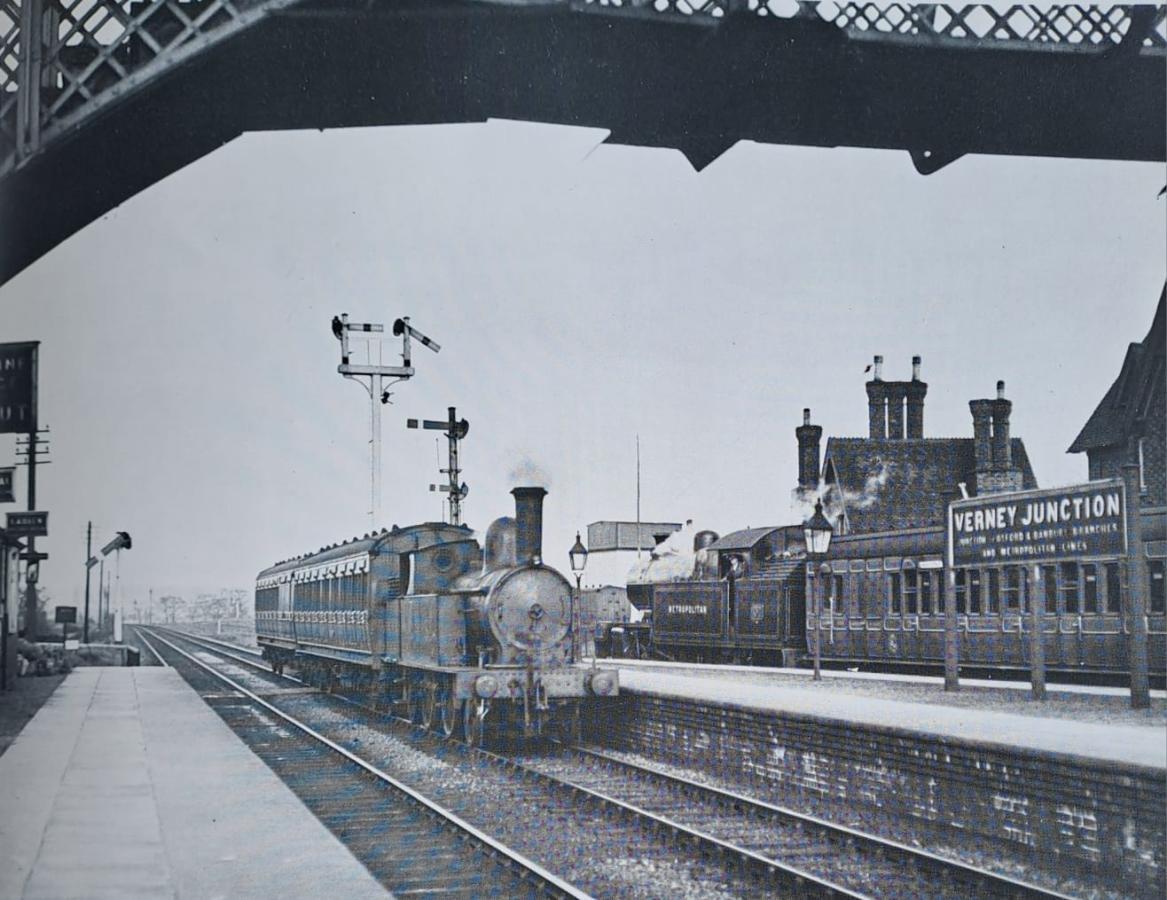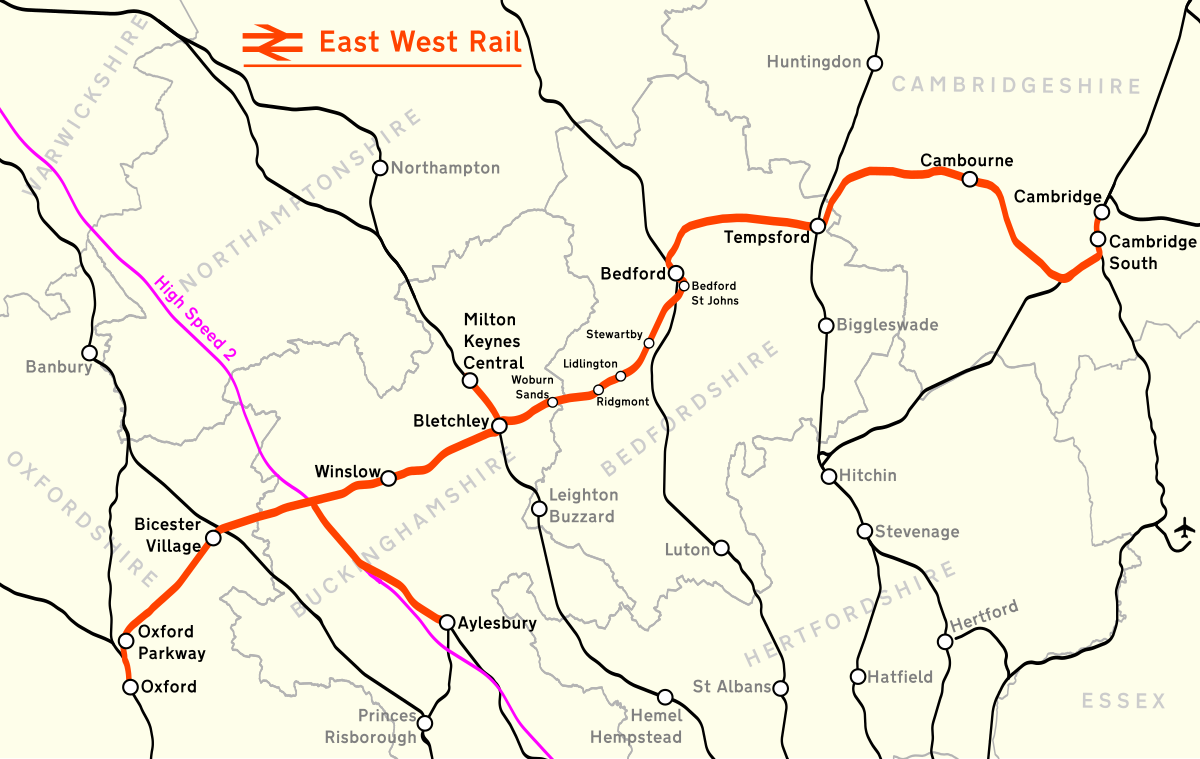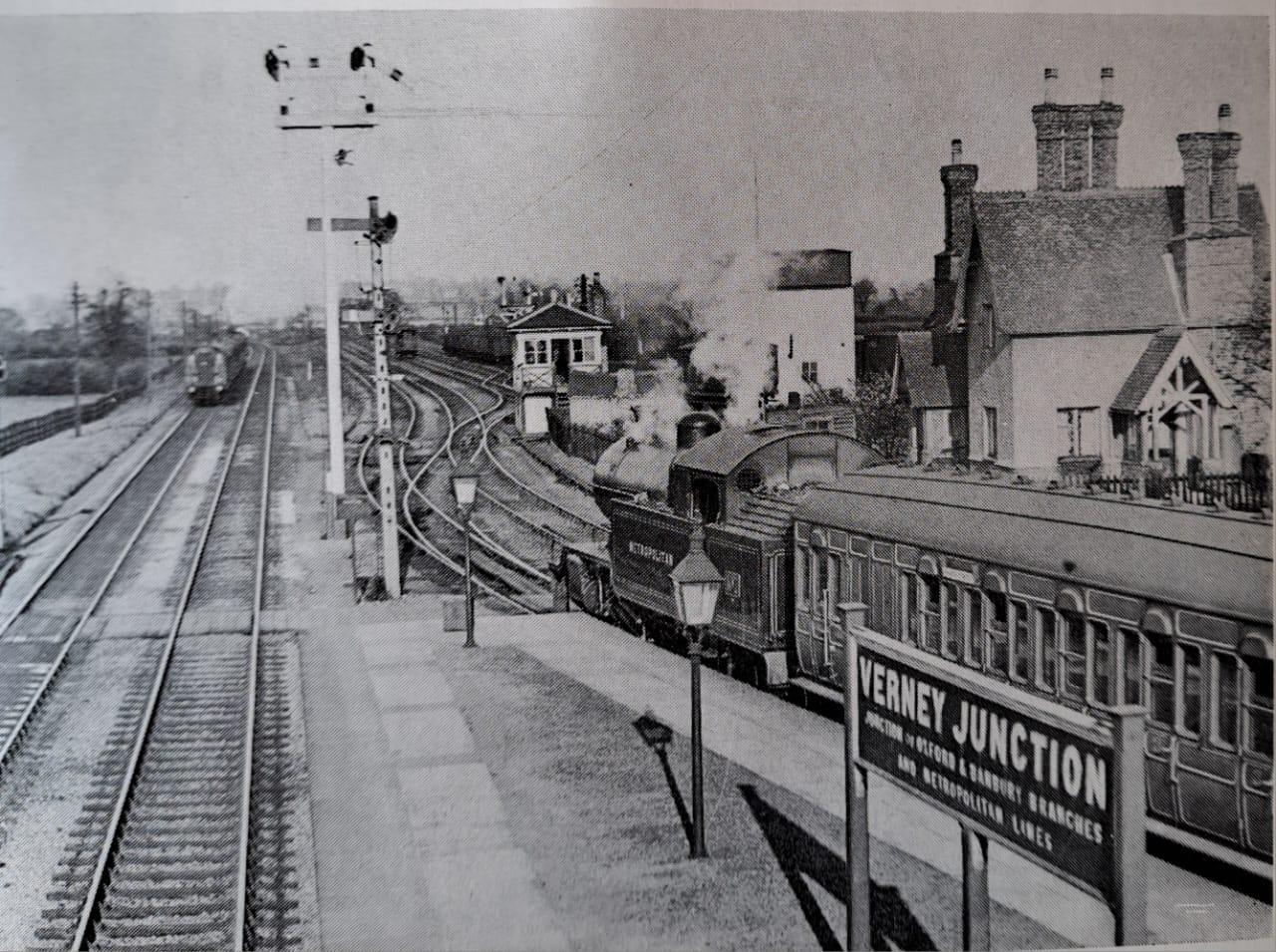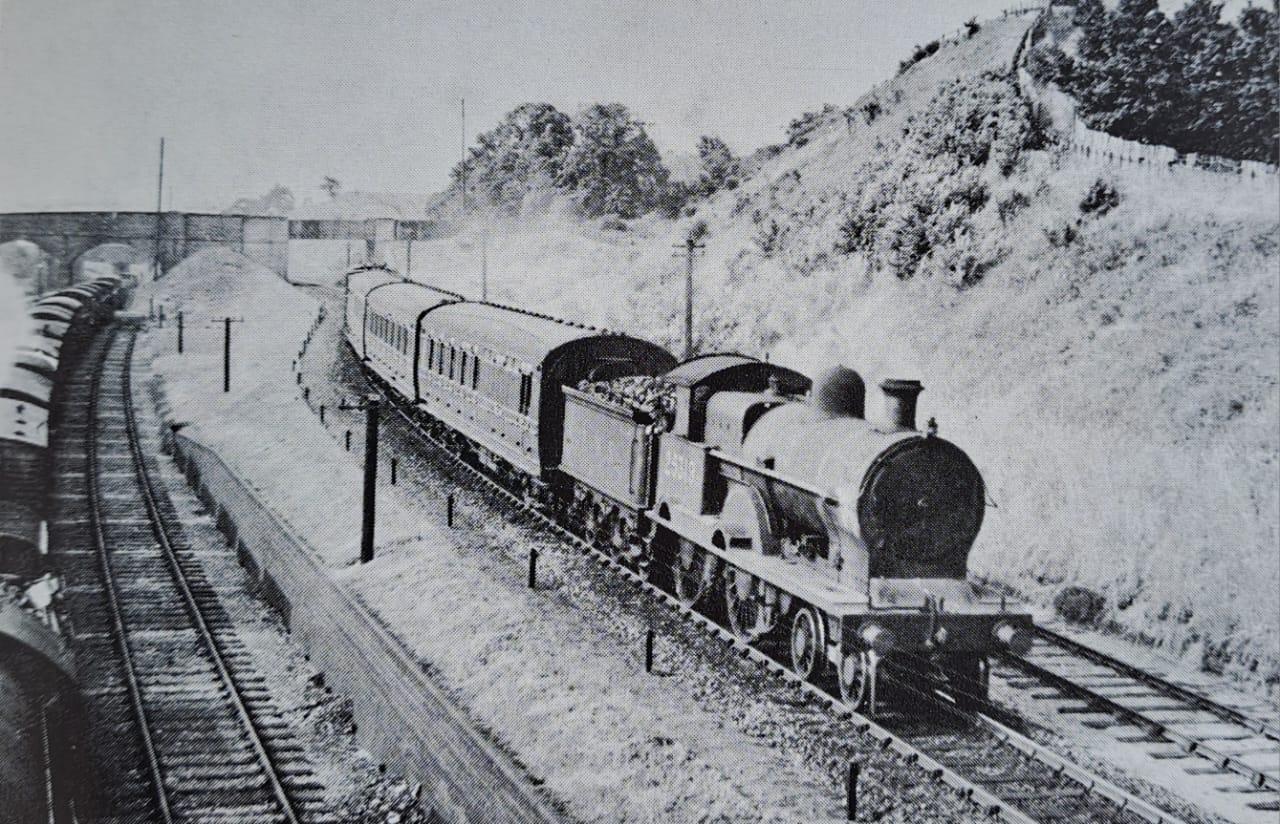
Disclaimer: Any views expressed by individuals and organisations are their own and do not in any way represent the views of The Heritage Portal. If you find any mistakes or historical inaccuracies, please contact the editor.
The British Chancellor of the Exchequer, Rachel Reeves, made the speech “How the UK will Kickstart Growth”, on the 29th January 2025, at the Siemens Healthineers, Eynsham, Oxfordshire. In the speech, one of the cornerstones of her policy for economic growth was the “Ox Cam Arc”, a corridor joining Oxford and Cambridge by way of Bicester, Bletchley, Milton Keynes and Bedford. In her speech she states:
Oxford and Cambridge offer huge potential for our nation’s growth prospects. Only 66 miles apart, these cities are home to two of the best universities in the world and the area is a hub for globally renowned science and technology firms. This area has the potential to be Europe’s Silicon Valley. To make this a reality, we need a systematic approach to attract businesses to come here and to grow here.
Pivotal to the success of the Government’s policy for sustained economic growth is the improvement of transport links between the two university cities. At present, to travel by train would involve a journey that would start at Oxford Station on a GWR service to London, Paddington (45 minutes). Once there, a change is made to the Elizabeth Line for the second leg under central London to Liverpool Street (12 minutes) where another change is made to a Greater Anglia service to Cambridge (75 minutes). If due allowance is made for walking between platforms and waiting for trains to leave, a journey could take 3 hours.
Should you wish to drive it would require travelling first up the A34 road to Bicester, thence the A4421 to Finmere, then turning onto the A421 to Bedford (via Bletchley) and thereafter the A428 to Cambridge (via St. Neots). The journey takes a minimum of two and half hours on a good day.
It may be a surprise to many to hear that a rail link once existed between the two university cities. It was known as the Varsity Line with a passenger service that lasted for 105 years, from 1862 until 1967. Its route paralleled that of the road trip described above, thus avoiding the London conurbation (Greater London)
The Varsity Line’s passenger service was withdrawn on the 1st January 1968 on the grounds that it was uneconomical to run. Receipts were only half the operational costs. It was a sign of the times and the Government of the day was cost cutting wherever it could, with no thought of possible reinstatement of services. The car was the star and travelling by train was “old hat”.
The decision to withdraw services along the line was taken by Tom Fraser, the Minister of Transport (October 1964 – December 1965). Even though it avoided "Beeching's Axe", it could not be saved.
The merits of restoring rail services between Oxford and Cambridge were first championed in 1995 (30 years ago) by a group of local authorities calling themselves “The East West Rail Consortium”. Their aim was to improve rail links between East Anglia and the rest of the country. By 2007 studies were called for by the Consortium after which the Department for Transport (DfT) started to show an interest in the scheme. This would eventually lead to the setting up of a company in 2017 called the “East West Rail Limited” to deliver the project in three stages. Oh, how long it takes to get things done in the UK!
Map of East West Rail (Wikipedia)
At the time of writing, Stage One (Phases 1 & 2) of the railway’s re-instatement is complete. It used the existing track bed of the Varsity Line and it should be open from Oxford to Bletchley and Milton Keynes by mid-2025, with Chiltern Railways being the preferred operator. Stage Two, is the Bletchley to Bedford section and at present a local railway operates, serving villages between the two main towns. It is known as the Marston Vale Line. It will require a great deal of upgrading to make it compatible with Stage One, with the work hopefully completed by 2030.
Stage Three between Bedford and Cambridge holds the greatest challenge. The original route of the Varsity Line cannot be followed as the line became disused and the land was sold off for private development. Therefore a new route has had to be found and is subject to comment from all interested parties before it gets a seal of approval. The completion date for Stage Three is “pencilled in” for the mid to late 2030s. However, interchange stations at Tempsford (for the East Coast Main Line: ECML) and Cambridge South (Greater Anglia) will be built in advance to be ready for when the line is built.
The original Varsity Line was an amalgam of three distinct lines that were built at different times to serve the local farming communities through which the line travelled. The common denominator was the railway’s operator, the London & North Western Railway (LNWR). It would supply the rolling stock (i.e. steam engines, carriages & goods wagons), provide a timetable and generally administer the line.
The first of the lines built was the middle section which was a branch line off the LNWR main line at Bletchley. It went eastwards as far as Bedford, hence it was called the “Bedford Railway”. The Branch started its services in 1846 at a time when the London & Birmingham Railway (opened in 1838) had just become a constituent of the LNWR.
The next line to be opened, in 1851, was the western section, originally known as the “Buckinghamshire Railway”. It branched off the LNWR main line at Bletchley and ran across the Vale of Aylesbury. It headed in a westerly direction to Claydon where it split into two line. One line would head north-westerly to Buckingham and Banbury and the other would head south westerly to Bicester and Oxford. The junction at Claydon would gain some fame when it changed its name to Verney Junction (in honour of a local landowner & MP, Sir Harry Verney). This happened in 1868 when the Aylesbury & Buckingham railway (A & B) coming up from the south connected there. Verney Junction would eventually fall into the orbit of the Metropolitan Railway in July 1891, when the A & B was taken over by the MET. The station there would be 50 miles from Baker Street.
Verney Junction looking east towards Bletchley (Forgotten Railways)
The last of the railways to join up to form the Varsity Line was the “Bedford and Cambridge Railway” and ironically it was the first to close. The railway was opened in 1862 and started from an end-on junction with the LNWR at Bedford, which had previously been the terminus of the branch from Bletchley. The line would then run in an easterly direction, via Sandy on the ECML, to terminate at the Great Eastern Railway station in Cambridge.
Train on the Varsity Line at Sandy alongside the ECML. On its way to Cambridge in 1936. (Forgotten Railways)
The construction of “East West Rail” (EWR) as a 21st century reincarnation of a former Victorian railway line will, when finally complete, reduce the time taken between Oxford and Cambridge to 90 minutes (the time it takes to watch a Soccer match). Trains will travel on certain sections at 100 mph (160 kph).
The Government is committed to the phasing out traction by diesel power by 2040 (make that 2050), as part of an initiative to reduce carbon emissions. This has been factored in when planning and building the EWR as extra height under bridges and tunnels has been given allowing for future electrification of the line.
A Railway Renaissance is on the horizon whereby lines closed, during the 1960s, by a blatant act of government sponsored vandalism (the Beeching Report) are being re-opened to serve their communities and the national interest.
Main image: Verney Junction, 2 May 1936, two months prior to the MET withdrawing its passenger services to Aylesbury. The train coming towards the camera is Oxford bound on the Varsity Line. (The Later years of Metropolitan Steam)
References and further reading
- The transcript of Rachel Reeves’ speech, which can be read on the web site GOV.UK, “Chancellor goes further and faster to kick start economic growth”.
- “Forgotten Railways – Chilterns and Cotswolds” by R. Davies & M. D. Grant. Published by David & Charles, 1975.
- East West Rail website: www.eastwestrail.co.uk
Comments will load below. If for any reason none appear click here for some troubleshooting tips. If you would like to post a comment and need instructions click here.



